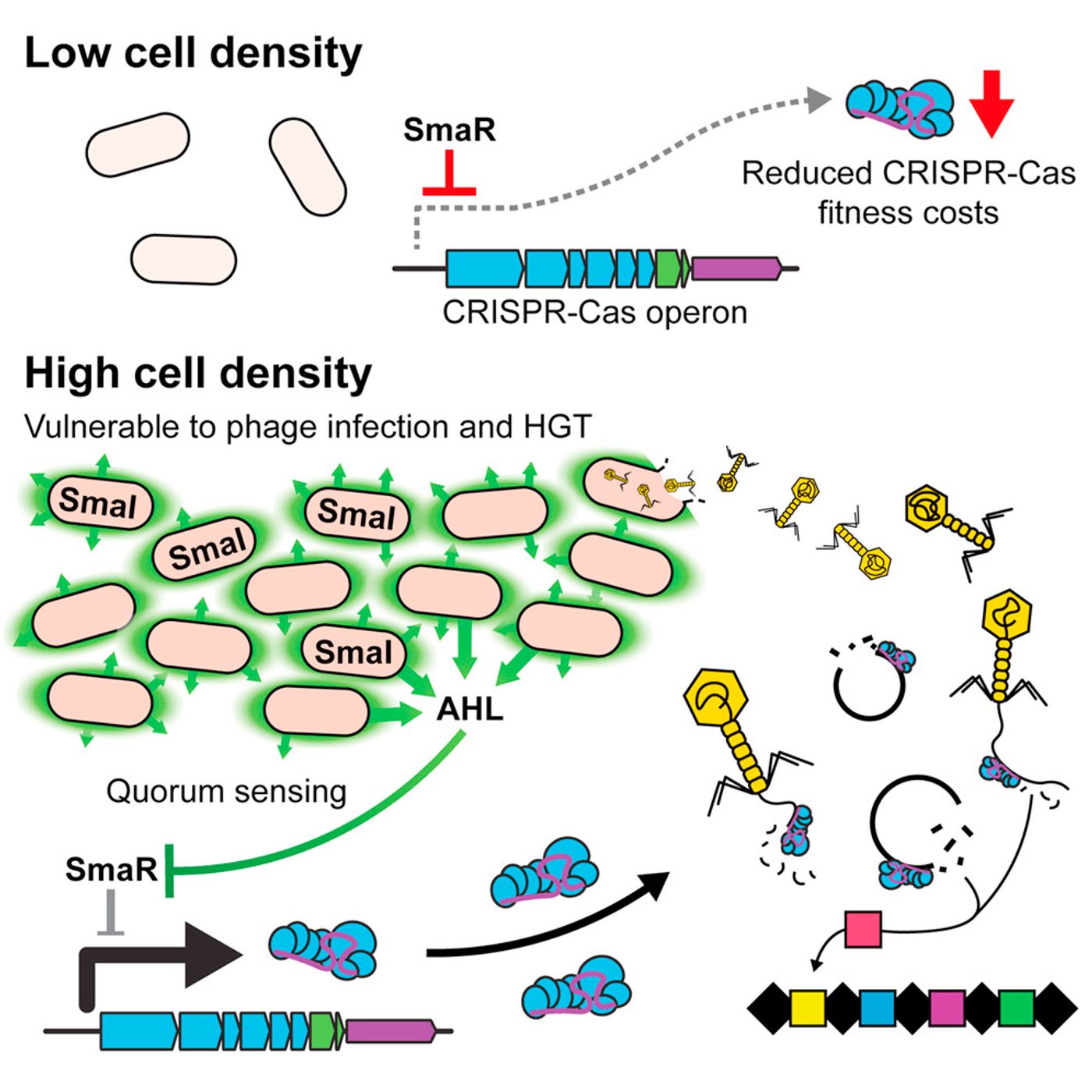Bacteria can communicate information about population density to one another through a phenomenon called quorum sensing, and it’s known that they can alter gene expression in response. New research by investigators at the University of Otago in New Zealand has shown that with quorum sensing, bacteria ramp up their immune systems. Just as humans are susceptible to pathogens, so are microbes, and to combat those dangers, bacteria have the CRISPR/Cas system of immunity.

Quorum Sensing Controls Adaptive Immunity through the Regulation of Multiple CRISPR-Cas Systems / Credit: Molecular Cell 2016 Patterson et al
The
new work is published in Molecular Cell, and was led by Peter Fineran, an Associate Professor in the Department of Microbiology and Immunology. The graphical abstract from the work is shown above; the research elucidates more about how CRISPR/Cas works in populations of bacteria. The graphic illustrates that SmaR represses the expression of CRISPR and the cas gene in the absence of AHL signals
"As humans, we have evolved sophisticated immune systems that enable our bodies to fight the viral infections that render us ill. Amazingly, bacteria - although single celled organisms - often possess similar adaptive immunity called CRISPR/Cas systems. But the way that these CRISPR/Cas systems function is very much different to our own immune systems," he says.
The scientists observed that a bacterium is able to boost its immune system after receiving input about cell density fro other cells. "The higher the population density, the stronger the communication between cells becomes, which results in greater coordination of immune defenses," Fineran explained.
The researchers found that bacterial cells can defensively increase their immunity when the density makes them at risk of viral infection spreading through a crowded population. "They [bacterial cells] both increase their ability to generate new immune memories and strengthen existing immunity by up to 500-fold," explained the first author of the work, Adrian Patterson, a PhD student.
The discovery of CRISPR/Cas is relatively recent, and might be best known through its use as a tool for genome editing in a wide variety of applications in molecular biology. While scientists have gotten a lot of use out of it already, how it functions exactly in bacteria is still not yet completely understood.
In bacteria, CRISPR/Cas chops up the genetic material of viral infections it experiences and stores them as a type of immune memory. In that way, they can be used to recognize and fight future threats. The mechanisms by which bacteria control CRISPR/Cas are one of the murky areas. Over activity of the CRISPR/Cas system can be deleterious and result in the death of a bacterium, but inadequate activity can allow a virus to wipe out a community of bacteria. This new work shows that it is through quorum sensing that bacteria can achieve a proper and healthy balance.
Dr Simon Jackson, second author of the study, is fascinated by the study of bacterial immune systems. "Lately we have made significant advances in understanding how they function. The really exciting part of our most recent discovery is that we predict the communication-based coordination of CRISPR-Cas immunity to be widespread throughout bacterial species."
Watch the video above to learn more about quorum sensing; it features Bonnie Bassler, who discovered it. In the video below, you can watch Peter Fineran give a talk on CRISPR/Cas in bacteria at the EMBO Conference, 2012.
Sources:
AAAS/Eurekalert! via
University of Otago,
Molecular Cell









